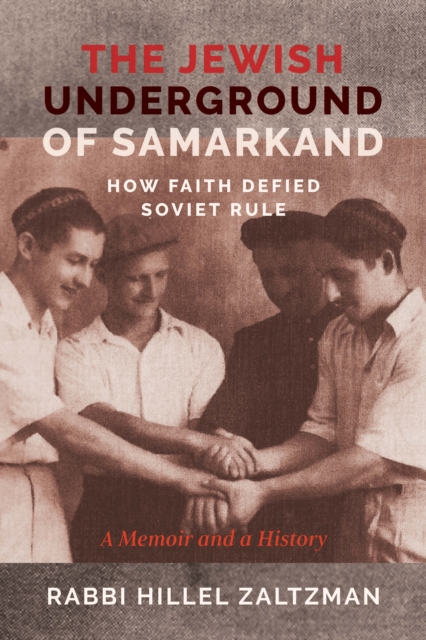A portal into the perseverance of Jewish culture in the face of attempts to destroy it. To answer his son's question: what was it like growing up in Samarkand? Rabbi Hillel Zaltzman wrote and researched this memoir and history about Chassidic Jews who found refuge in Samarkand during the World War II and continued to live there under Soviet rule. This is a personal story for Zaltzman, who was born in Kharkov, Ukraine. When the Nazis invaded Kharkov, Zaltzman's parents fled with their three young children to Samarkand (Uzbekistan). There they reconnected to other refugee Chassidic families, as well as some famous Chassidic rebbes also in flight. In Uzbekistan they created a thriving Jewish community until its institutions were abruptly shut down by Stalin immediately after the war. Still this Jewish community in Samarkand, Uzbekistan is remembered as shpitz Chabad--the epitome of Chassidic ideals and devotion. Zaltzman's father kept him out of the Soviet schools, where atheism was promoted and Sabbath observance was impossible, teaching him furtively at home, until a neighbor discovered his existence at the age of 9. Zaltzman had no choice but to attend a public school then, but he still observed the demands of his faith and stayed home from school when necessary. Hillel studied with esteemed Chabad Chassidic rebbes who taught at great personal risk. If discovered, they could be sentenced to harsh labor in Siberia. Zaltzman credits his father's unswerving commitment to his chinuch--his Jewish education--was beyond any compromise, and it was an exemplary expression of their Chabad brand of Chassidic Judaism: "The Chabad community was infused with a rich inner world of Chassidic vitality," Zaltzman writes. Meanwhile, the Soviet regime remained obsessed with eliminating a Jewish religious identity; a special division of the NKVD (Soviet secret police) was assigned the task of destroying Jewish schools and yeshivas, and surveilling individuals through synagogue informers. Zaltzman records his experiences and adventures and those of other memorable people he has known and the sacrifices they made to share their love of Torah and Jewish learning in the secret underground yeshivas. He describes their attempts to celebrate Jewish holidays, make matzah, and obtain prayer books, as well as their other colorful escapades. He also tells of their exasperating experiences trying to obtain exit visas to leave the Soviet Union. The largely untold story of Chabad activism a










